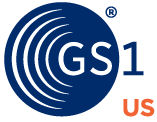A UPC code, which stands for Universal Product Code, is a series of black lines that help identify a product. This symbol is encoded with a series of numbers known as the GTIN, which makes up a complete barcode. The UPC is scanned at the point of sale, along with these lines and digits. They make up the barcode and often allow systems to properly identify items and look up their price.
A UPC code allows retailers and manufacturers to accurately track products in their inventory. This allows for greater recall accuracy and inventory management. A proper UPC code, along with additional information such as batch/lot numbers, allows a company to recall damaged items accurately and easily from a retailer, distributor, or warehouse before they reach the public. Damaged items may include contaminated food, tainted medical devices, medicines and faulty items that could injury others.



